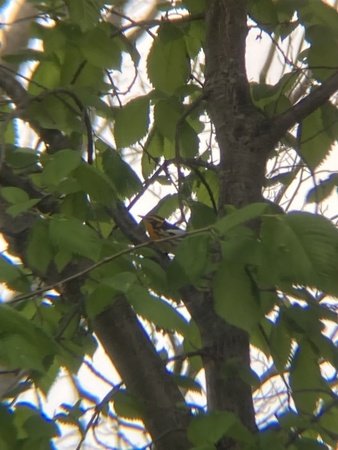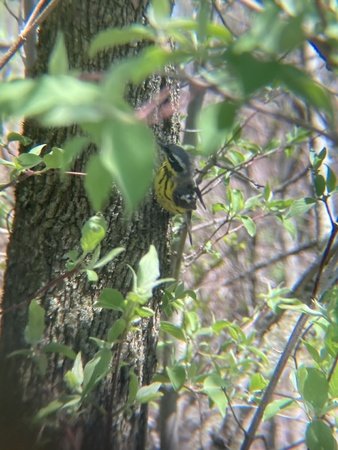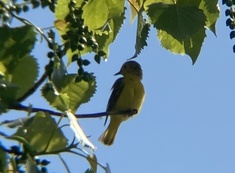
The Great Spring Migration
First published: Tuesday April 18th, 2023
Report this blog
Any avid birder knows about the Spring Migration. And even if you're a complete muggle when it comes to nature, you probably still know that birds migrate based on the time of year. More specifically, when I refer to the "Great Spring Migration," I'm referring to the movement of many species of birds which traverse North America during the spring months.
A North American Phenomenon
Residents from throughout the United States and Canada witness birds passing by as the season blooms from the bleakness of winter. Hundreds of species of birds leave their vacation homes in lower stretches of North America (or in many cases even into South America) and hightail it up north. Because of large geographic barriers, many of the birds find themselves following the same path. For instance, if birds want to get to the northern parts of North America from Central or South America, any JetPunker knows that they must deal with the Caribbean Sea. This leads most birds to follow along a similar trail through eastern Mexico or to utilize the geographic dispersion of the West Indies.
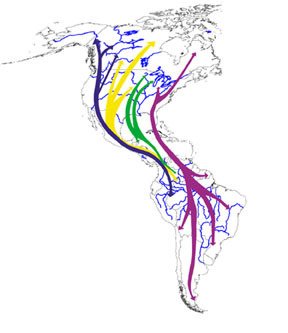
As a matter of fact, as this blog is being published, birds are already making there way north for the summer. Some have already made it as far as Canada, while others are only beginning their journey. Within the next month, most birds will have arrived in their summer breeding range!
The Magee Marsh
The geography of the United States causes many areas to be particularly special when it comes to birding. One of these areas is Magee Marsh, just on the southern shores of Lake Erie. I wanted to mention this particular location not only because it's commonly cited as one of the best places to bird in North America, but because I live close enough to make a nice day trip out of visiting. The surrounding area has a week long event know as the "Biggest Week in American Birding," in mid/early May.
Why is this location the perfect recipe for birding? Lake Erie. Birds on the Atlantic Flyway have been travelling north across the United States for quite some time, being able to stop and rest when they please. However, Lake Erie poses a hurdle in their journey if their breeding ground is in Canada. As they fly towards the lake from above and realize they need to stop for rest, they see a somewhat industrialized coast, with one exception: a cozy nature preserve beckoning them to grab a bite to eat and rest their tired bodies.
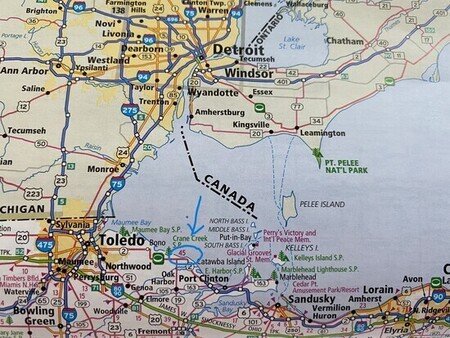
Another factor for Magee Marsh's ideal location? The Lake Erie Islands. Several islands scatter north from the Sandusky area cutting across Lake Erie. The islands serve as a geographic path to be able to cross Lake Erie.
Of course, an important factor for these little guys is the wind. Having a nice tail wind to push them along goes a long way. If birds attempt to make the journey from the eastern side of Lake Erie (e.g., near Cleveland), they would have the Midwest's westerly winds pushing them deeper into the center of the lake. On the other hand, starting farther west minimizes the risk of being plunged into the wider portions of Lake Erie. For this reason, birds tend to stop and rest, waiting for a day with strong tailwinds to aid them in crossing the lake.
Warbler Capital of the World
The location of Magee Marsh, and greater Northwest Ohio, is most notably known for its incredible amounts (in number of individuals and number of species) of Warblers. Based on their breeding and wintering ranges, they tend to follow the Atlantic (or Mississippi) flyway, meaning many of them end up at Magee Marsh. For this reason, the area is dubbed the "Warbler Capital of the World."
I'm certainly no photographer, but I thought it would be interesting to incorporate some of my own photos into this blog of Warblers I've found. I took the photos on my phone so that I could verify my IDs later on, so the photos certainly are no special sight to behold!
